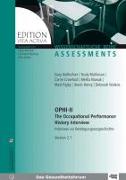Services Management: Conceptualizing and Measuring Customer Perceived Service Quality
BücherAngebote / Angebote:
Seminar paper from the year 2011 in the subject Business economics - Marketing, Corporate Communication, CRM, Market Research, Social Media, grade: 2, 3, University of Münster (Junior Professorship for Marketing), language: English, abstract: Service Quality is a field of marketing, which stimulated numerous scholars to do theoretical and empirical research on. The SERVQUAL concept first was amongst concepts like The Nordic Model by Grönroos (1984) and The Three-Component Model by Rust and Oliver (1994) and SERVPERF by Cronin and Taylor (1992). After there has been a major debate which role expectations should play for service quality, which primary dimensions should be used to conceptualize and measure it and how service quality has to be integrated in existing marketing theory, newer approaches concentrate either on the depth of these dimensions, further optimization of the integration of service quality into marketing theory or specific factors which might play a role on distinct settings. In a multilevel approach, primary dimensions can be understood as direct antecedents of service quality. Subdimensions are antecedents of the primary dimensions of service quality.
This paper deals with the issue, how customer perceived service quality (CPSQ) is supposed to be conceptualized and measured. In order to do this, the first section begins simply with several ideas that came up in literature what factors might influence service quality and how it can be defined. Then the paper illustrates why generality of theories is useful in Marketing Research and how it can be achieved. Moreover, an adequate framework to justify or reject particular concepts and measurements of service quality is provided. In the third section, the paper continues with the introduction of concepts and measurements of service quality. Attention is given to broader approaches as well as specific approaches of service quality. The paper combines these approaches in the fourth section with the help of the diagnostic framework provided before in order to achieve a concept of CPSQ with an optimal degree of generality. Thereafter the paper closes with a conclusion that gives a résumé on the results of this work.
Folgt in ca. 10 Arbeitstagen




